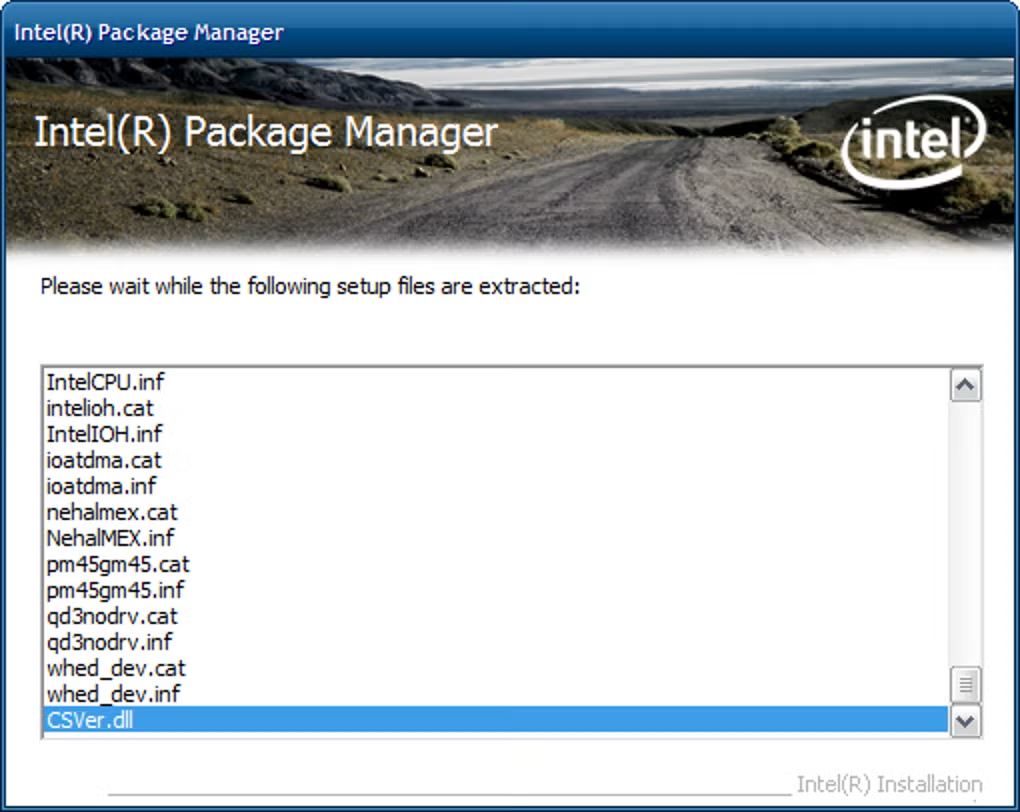
Overview
Intel Chipset Device Software is a vital utility that ensures correct installation of inf files so the Windows operating system can properly recognize hardware components on a motherboard. It connects the CPU, processor, RAM, and memory with the rest of the system, making sure that every controller, card, and peripheral works without conflict. By supporting interfaces like AGP, USB, IDE, ATA, SATA, and PCIe, this software improves device recognition in Device Manager and helps maintain strong interconnectivity. In personal use, it has often acted as the quiet but essential bridge that ensures smooth communication between the board and its connected parts. Try downloading 3DMark
The package functions like a framework that aids in configuration, prevents issues with outdated files, and supports service pack updates for better compatibility. Through regular updates, users benefit from optimization, improved performance, and overall stability, as it reduces risks of bugs and firmware mismatches. Because it is genuine and official, the assistant provides trustworthy support and simplifies the process of uninstall or reinstall when required. For anyone seeking reliable storage and device handling, this small but powerful software ensures a smooth experience across multiple components of a PC system. Also try Total Commander
❓ What is Intel Chipset Device Software?
Intel Chipset Device Software is a crucial utility designed to ensure proper recognition and functioning of the motherboard chipset and system hardware components in Windows. Often referred to as the INF Update Utility, this tool installs the required INF files so that the operating system can correctly identify Intel chipset features such as CPU, PCIe controllers, USB ports, SATA storage, AGP, IDE, and other motherboard peripherals. You can download Ventoy
Without this software, Windows may label hardware components as “Unknown Device,” causing compatibility or performance issues. By updating system drivers at the firmware and chipset level, Intel Chipset Device Software helps improve stability, performance, and overall system optimization.
This utility doesn’t replace actual drivers like graphics, audio, or network; instead, it provides the framework and configuration files that ensure Windows communicates seamlessly with Intel-based hardware. It is especially important after a fresh OS installation, hardware upgrade, or motherboard replacement. Try downloading Clean Space



✨ Features and Highlights
- ⚡ INF File Installation – Updates Windows with correct chipset device names and configurations.
- 🖥 Hardware Recognition – Identifies Intel CPU, RAM, PCIe, USB, SATA, and motherboard controllers.
- 🔧 Improved Compatibility – Ensures smooth communication between the OS and Intel components.
- 📊 Performance Optimization – Eliminates bottlenecks caused by outdated or missing chipset definitions.
- 🛡 System Stability – Reduces crashes and errors from unrecognized hardware.
- 🔄 Automatic Updates – Supports integration with Intel Driver & Support Assistant.
- 💽 Lightweight Utility – Uses minimal system resources.
- 🛠 Essential After OS Reinstall – Required after formatting or installing a new version of Windows.
- ✅ Official Intel Release – Safe, genuine software directly from Intel.
📥 How to Install Intel Chipset Device Software
- Download the latest Intel Chipset Device Software installer from the link below.
- Run the installer and accept the license agreement.
- Follow the installation wizard to apply INF updates to your system.
- Restart your PC to finalize hardware recognition.
- Verify updated devices in Device Manager.
Download Folder Colorizer for Windows – Free
💡 Why Use Intel Chipset Device Software?
- Ensures Windows correctly recognizes Intel chipset hardware.
- Prevents issues like “Unknown Devices” in Device Manager.
- Provides a stable foundation for installing other drivers.
- Helps achieve maximum system performance and compatibility.
- Lightweight and requires minimal user configuration.
- Essential for new builds, clean OS installs, and motherboard upgrades.
🖥 System Requirements
- OS: Windows 7, 8, 8.1, 10, 11 (32-bit & 64-bit)
- Processor: Intel CPU with supported chipset
- RAM: 512 MB minimum
- Hard Disk Space: 20 MB free space
- Motherboard: Intel chipset-based system
⚡ Power Tips
- Always install Intel Chipset Device Software before other drivers (GPU, Audio, Network).
- Use Intel Driver & Support Assistant for automatic updates.
- After a Windows clean install, run the chipset update first for smoother setup.
- Pair with the latest BIOS update for improved performance.
- Keep an offline installer handy when reinstalling Windows without internet.
✅ Pros and ❌ Cons
| ✅ Pros | ❌ Cons |
|---|---|
| Ensures proper hardware recognition | Provides no visual features – runs silently |
| Improves stability and system performance | Doesn’t include functional drivers (graphics, audio, etc.) |
| Essential after OS reinstall or upgrade | Not useful for non-Intel chipsets |
| Lightweight, official Intel utility | Requires manual updates if not using Intel Assistant |
| Free and safe to use | Limited to Intel-based hardware only |
🏁 Conclusion
Intel Chipset Device Software is a must-have utility for anyone running an Intel-based motherboard. By installing the correct INF files, it ensures that Windows can properly detect, configure, and optimize chipset components, leading to smoother performance and higher stability.
Whether you are building a new PC, reinstalling Windows, or upgrading your motherboard, this utility provides the foundation required for other drivers to function correctly. Lightweight, official, and free, it is one of the first tools you should install after setting up a new Intel system.




